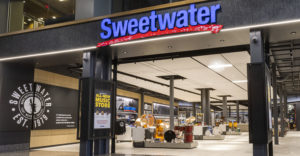As the new year rings in, e-commerce merchants and marketers are bracing for escalating threats posed by customer dishonesty and insider misconduct.
This trend is exacerbated by the economic downturn, which has tightened cybersecurity budgets, making the marketplace more vulnerable to attacks, including those from politically motivated, highly skilled nation-state hackers.
In response to worsening fraud scams, which only seem to teach customers more ways to cheat, merchants are shifting their approach. Instead of demanding the return of disputed items, they’re now issuing hassle-free replacements or refunds with no questions asked.
This change is largely due to the prohibitive costs and complexities of processing returns, which often outweigh the potential benefits, even when fraud is suspected. Retailers find it more efficient and cost-effective to allow customers to keep disputed items and quickly address their complaints.
The Many Faces of E-Commerce Fraud
Marketing reports indicate that merchants now regard ‘friendly fraud’ — where legitimate customers make a purchase, receive the product or service, then file a chargeback to reverse the transaction while keeping the goods — as an inevitable cost of doing business. As a result, this lack of action against fraudulent retail claims encourages more consumer fraud.
The Q4 2022 Digital Trust & Safety Index from Sift, a fraud prevention software provider, reveals that 23% of consumers admitted to disputing purchases as fraud even after receiving and being satisfied with the item, suggesting the actual incidence of friendly fraud might be even higher.
Furthermore, the Ponemon Institute’s 2022 Cost of Insider Threats study highlights another growing concern: economic insecurity among employees, which can cloud their judgment and lead to digital wrongdoing. Cyberattacks involving such bad actors, which have bilked organizations out of millions, have surged by 44% in the two years leading up to 2023.
Additionally, these challenges in retail commerce are leading to increased operational costs for merchants. They are now incurring additional expenses to implement protections such as delivery insurance and fraud controls.
These extra measures are essential to mitigate the risks of fraud and dishonesty. However, they also contribute to rising business costs, noted Rodrigo Figueroa, COO of Chargeback Gurus, a firm specializing in loss prevention and recovery solutions.
“Many delivery processes now require signatures or, more prominently, pictures of the products at the delivery spot. That came out of this pressure on merchants,” he told the E-Commerce Times.
Hemorrhaging From Friendly Fraud
Figueroa expressed a strong dislike for the soft-sounding term “friendly fraud.” He refers to it in harsher terms, such as consumer theft.
Current shopping trends show that fraud numbers are steadily growing as the final holiday shopping season of 2023 draws to a close. Research pegs the costs per incident exceeding $15 million.
Statistics from cybersecurity firm Bridewell should ring alarm bells. It warns that economic pressures are driving more internal employees to cybercrime. Over a third (35%) of cyber professionals believe the economic downturn is causing more internal employees to commit cybercrime.
According to a 2023 report compiled by Riskified, an e-commerce fraud management firm, retailers will likely lose $100 billion annually to bots, coupon stacking, and return fraud. The report suggests that the advancement of AI and an increasingly high risk of data leaks create a need for new tools to address rampant fraud while preserving consumer privacy.
Tackling E-Commerce Fraud and Retail Threats: Q&A
Rodrigo Figueroa from Chargeback Gurus discussed further with us the impact of fraud on online shopping and the continuing struggling economy. He shared what retailers face in deciding how to handle thieving consumers and false claims of stolen deliveries.
E-Commerce Times: How can merchants defend against false consumer claims of “porch piracy?”
Rodrigo Figueroa: In many cases, merchants can track the shipping process and hold handlers accountable. But those steps cost added expenses to the delivery process. The big problem is at the customer’s delivery location. But the last mile was always a problem.
If you are a regular goods merchant, you are adding cost into your logistical process and in confirmation of delivery to the front door. You must invest in that capacity if you aren’t a digital goods company. You must make sure that your process recognizes the buyer’s device and IP address so you realize where it is coming from. All of these things matter nowadays.
Do you think the industry will turn the situation around?
Figueroa: It becomes a numbers proposition. The first time a customer reports not getting the delivery, most retailers will refund or reship because they want to keep the customer for future purchases. But if that happens two or three times, some retailers respond that they do not want you as a customer anymore.
What is the range of extreme measures merchants might take?
Figueroa: We’ve seen a lot of merchants taking a very strict approach. They will take more stringent measures if they see a sequential or abusive pattern.
They might decide you are not a good customer anymore. That will be one element. On the subscription side, you will see a provider taking a more proactive approach to help merchants address the cost of dealing with chargebacks.
Do many mom-and-pop and SMB merchants use your company’s technology or is the bulk of your business with large corporations?
Figueroa: The bulk of the business is from larger corporations. Smaller retail stores take the chance of doing it themselves. The fact is, if you are a mom-and-pop store, what’s your true exposure to digital?
They are not going to comply with chargebacks for just a handful of cases a month because it is just not worth it. In this case, they will call the payment processor and seek a workable solution.
How might this ongoing fraud behavior impact free delivery?
Figueroa: It is a cost of doing business — no doubt about it. But profit margins are incredibly close. The retail sector has seen a lot of competition. So, they must become highly efficient to survive in this broader e-commerce ecosystem.
If the cost of a client becomes negative for the merchant, it is time to start making tough decisions. We’re just a couple of years into this new level of pressure. We have not seen what that type of accommodation will happen.
It can become a convoluted process with fraudulent payments. We always start with higher levels of deflection. Then, invest in technology to put new mandates and frameworks in place. You need the whole ecosystem to work together to address that to bring it down to a level that is comfortable for everyone. There’s no such thing as zero fraud. The point is, how do you get to the lowest level so it doesn’t become a bigger issue?
How close do you see the retail sector to reaching that accommodation level?
Figueroa: In terms of revenue, customer experience, and all these other elements, I don’t think that we have reached the level of accommodation that everybody’s comfortable about. Everyone is adapting differently. The retail industry has not found one solution.
The goal at this point is for companies to hire firms to help them recover some of these lost revenues. Merchants are sick and tired of taking those losses.
Is the retail outlook as bleak as it sounds with no real hardcore solution?
Figueroa: The ecosystem is quite healthy. It’s not bleak in the sense of having an abnormal ecosystem fraught with fraud. It is not normalized across all the participants. But if you are a merchant who has not invested a lot in technology and authentication, you will probably suffer more than others.
The point I wanted to make here is that the issue can be more acute in specific verticals. It’s about knowing your customers. The mindset has changed a lot. The shift is now trying whatever works and recognizing trends.
That shift is forcing retailers to invest in understanding behavior, understanding their consumer base, and understanding patterns. A lot of companies got good at it.
With that thought in mind, do you see any movement within the retail industry towards tracking down repeat offenders and bringing legal action against them?
Figueroa: It depends on the reality. The moment to involve law enforcement needs to be big enough. It should be a severe issue or incident. If you know the deception was part of a fraud ring that successfully attacked you and involved huge sums of money, that would make sense to pursue the legal cost.
Do you want to put another layer of costs just trying to go after these people? It’s very difficult to find those folks in the digital space. So, I would say companies are reticent about going after these guys.



























































Social Media
See all Social Media